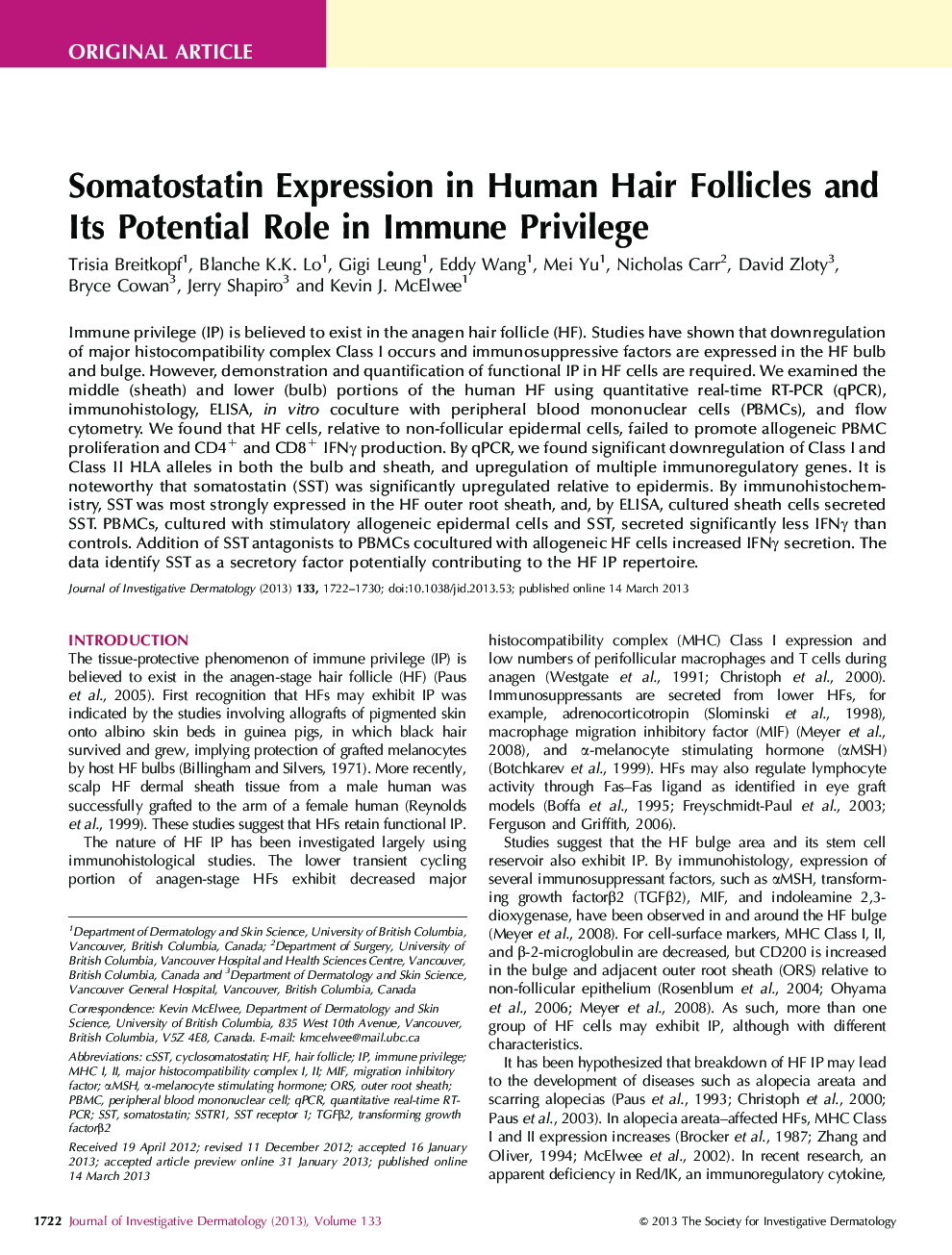| Article ID | Journal | Published Year | Pages | File Type |
|---|---|---|---|---|
| 6077635 | Journal of Investigative Dermatology | 2013 | 10 Pages |
Abstract
Immune privilege (IP) is believed to exist in the anagen hair follicle (HF). Studies have shown that downregulation of major histocompatibility complex Class I occurs and immunosuppressive factors are expressed in the HF bulb and bulge. However, demonstration and quantification of functional IP in HF cells are required. We examined the middle (sheath) and lower (bulb) portions of the human HF using quantitative real-time RT-PCR (qPCR), immunohistology, ELISA, in vitro coculture with peripheral blood mononuclear cells (PBMCs), and flow cytometry. We found that HF cells, relative to non-follicular epidermal cells, failed to promote allogeneic PBMC proliferation and CD4+ and CD8+ IFNγ production. By qPCR, we found significant downregulation of Class I and Class II HLA alleles in both the bulb and sheath, and upregulation of multiple immunoregulatory genes. It is noteworthy that somatostatin (SST) was significantly upregulated relative to epidermis. By immunohistochemistry, SST was most strongly expressed in the HF outer root sheath, and, by ELISA, cultured sheath cells secreted SST. PBMCs, cultured with stimulatory allogeneic epidermal cells and SST, secreted significantly less IFNγ than controls. Addition of SST antagonists to PBMCs cocultured with allogeneic HF cells increased IFNγ secretion. The data identify SST as a secretory factor potentially contributing to the HF IP repertoire.
Related Topics
Health Sciences
Medicine and Dentistry
Dermatology
Authors
Trisia Breitkopf, Blanche K.K. Lo, Gigi Leung, Eddy Wang, Mei Yu, Nicholas Carr, David Zloty, Bryce Cowan, Jerry Shapiro, Kevin J. McElwee,
